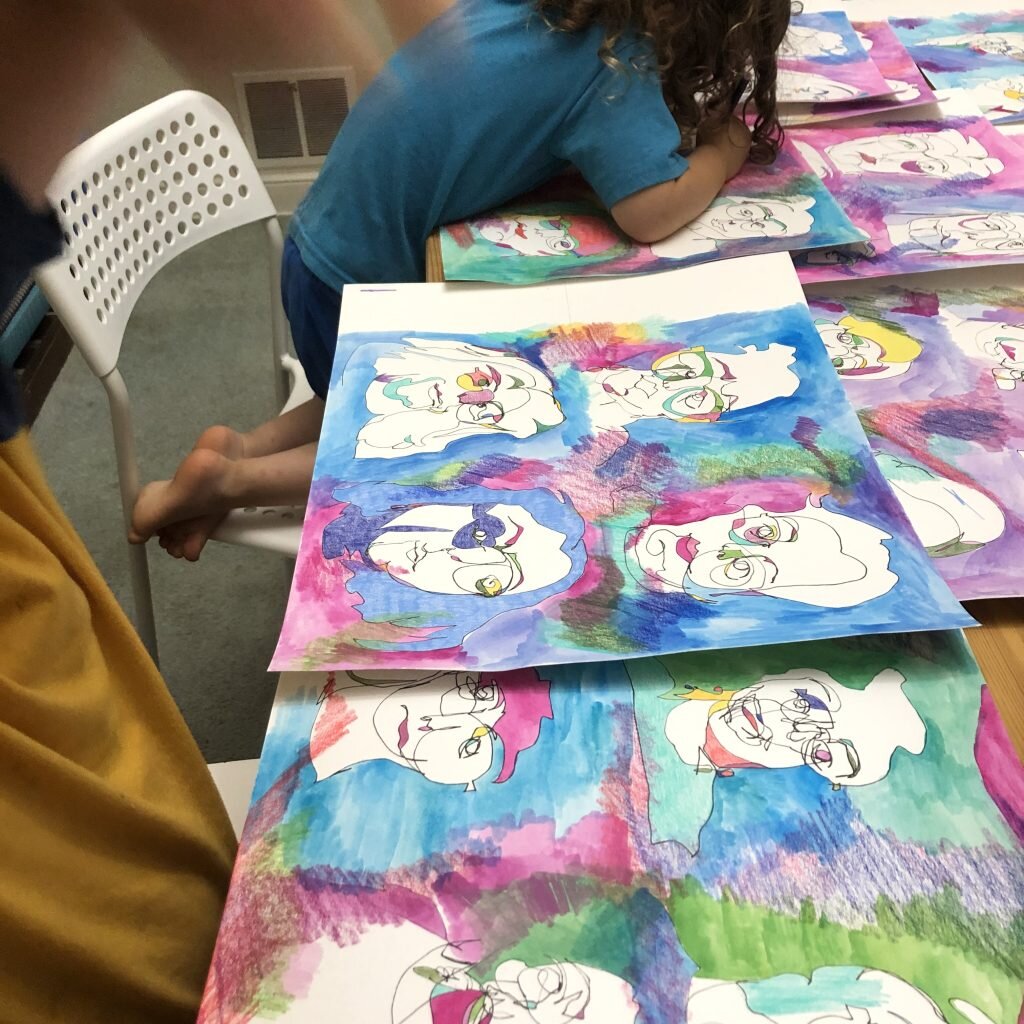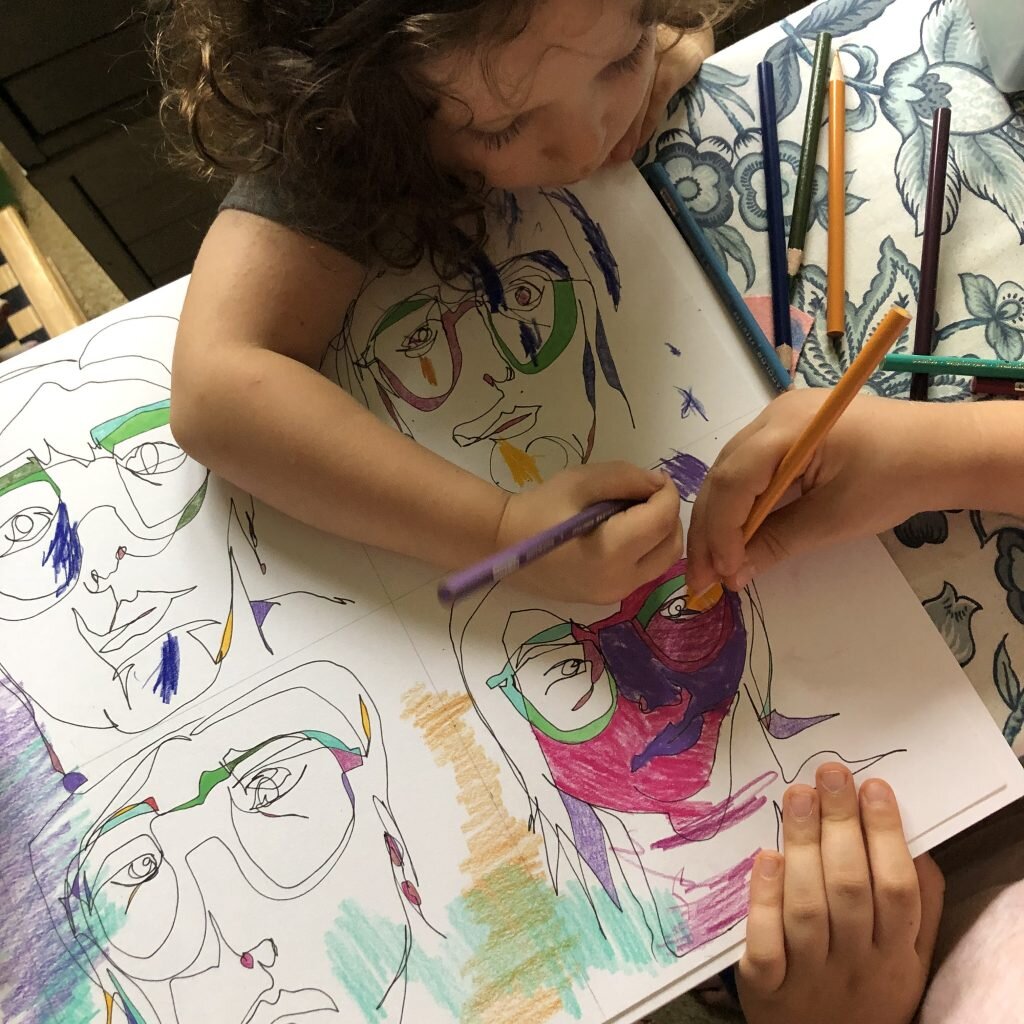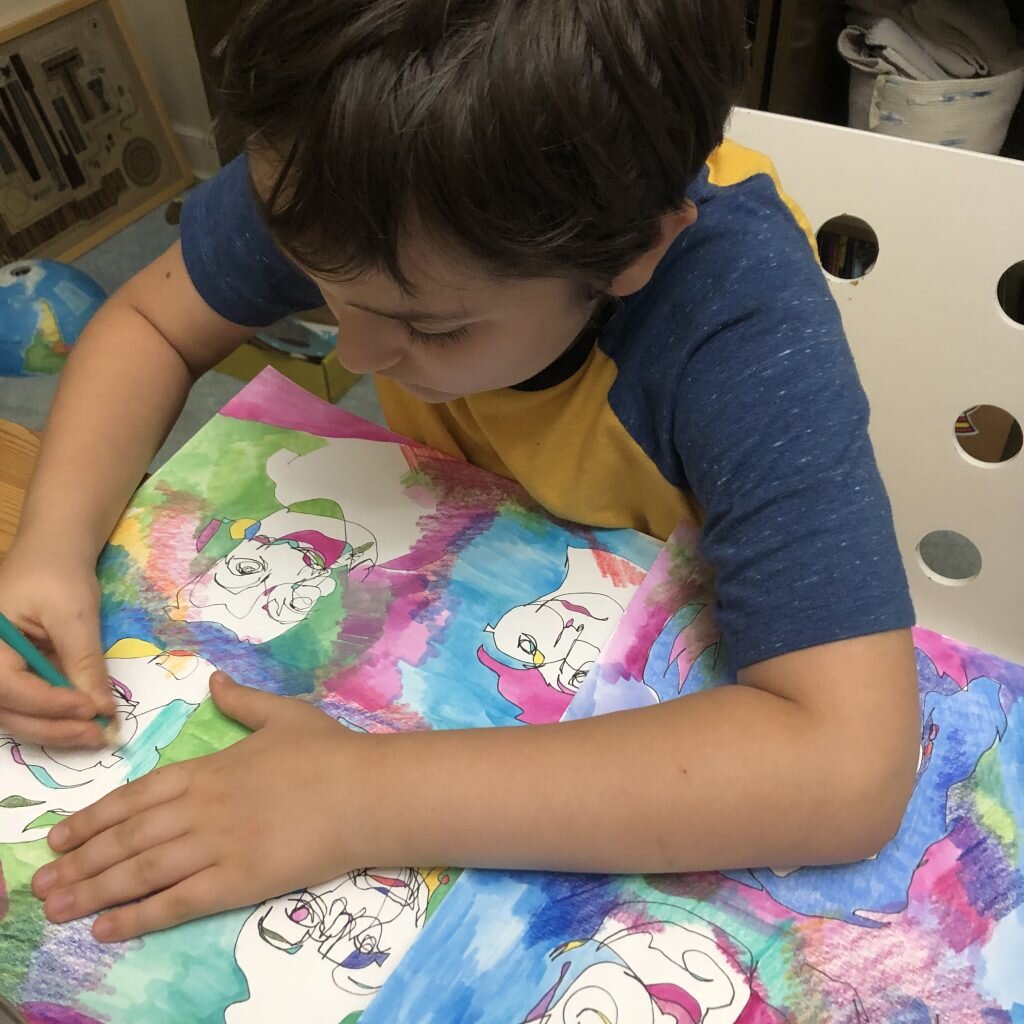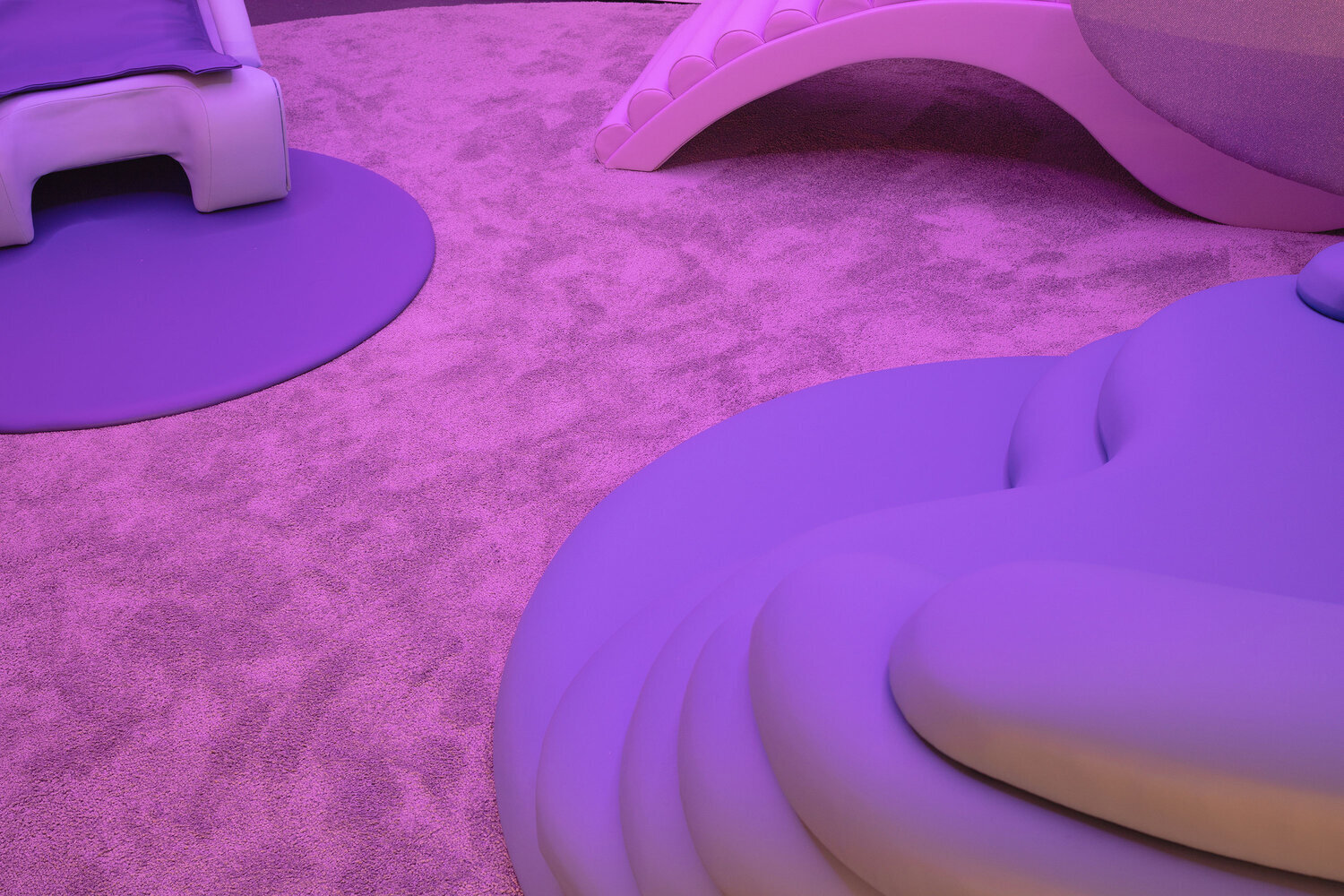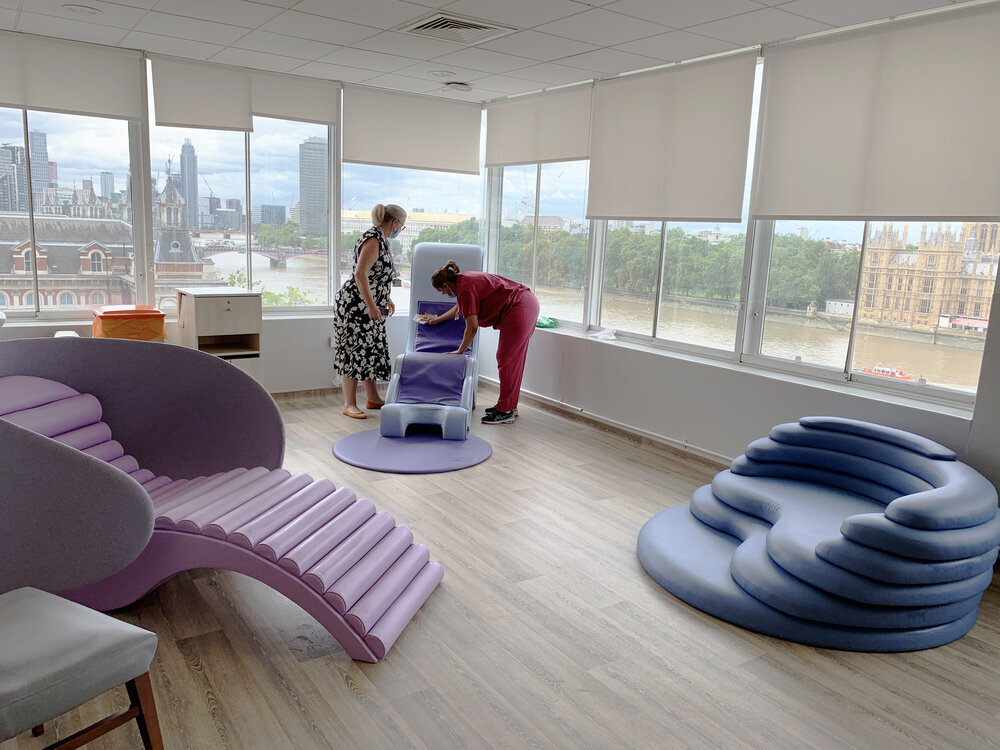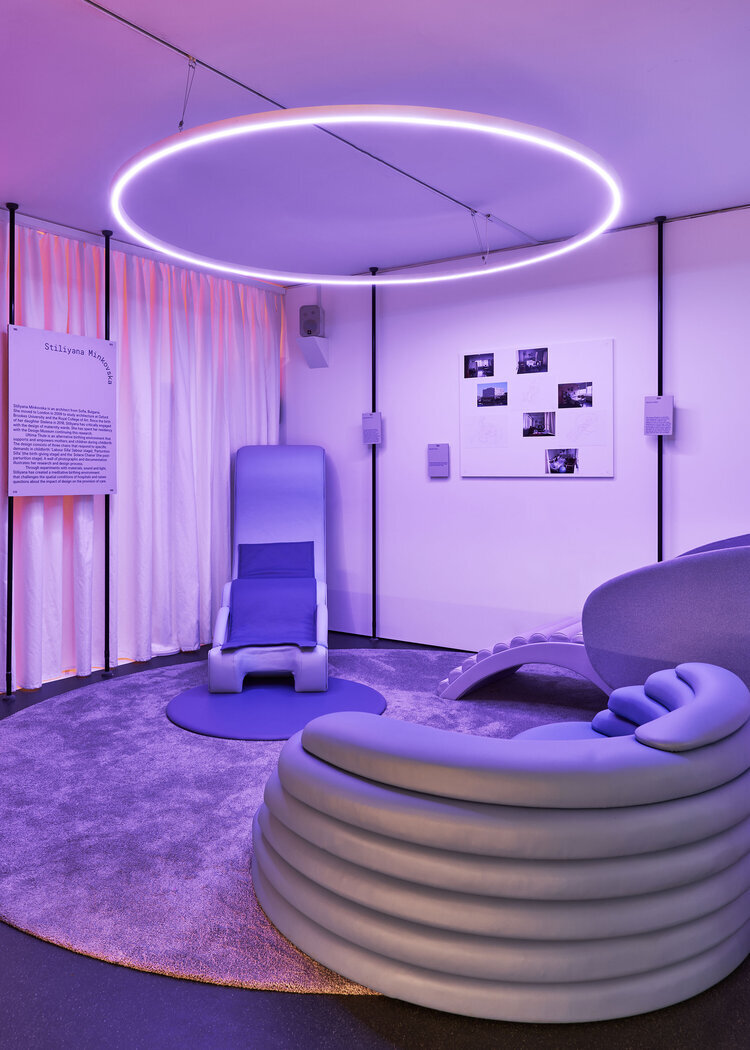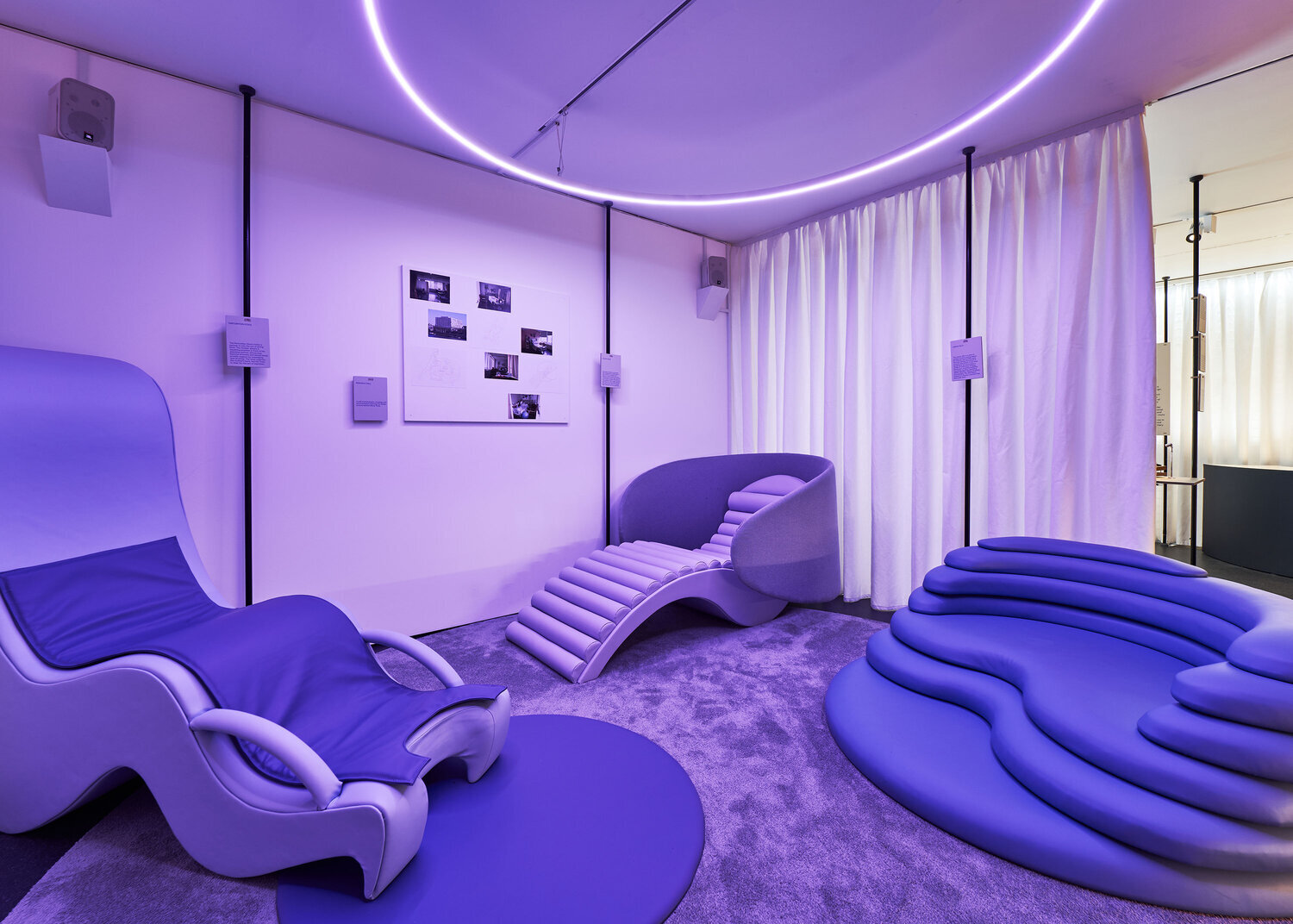OCTOBER 7, 2021 ⟶ OCTOBER 29, 2021
THE SLEETH GALLERY
ANTHROPOLOGY of MOTHERHOOD
“Cactus Spoon”, gwen charles video still
Image Description: Image still from the the video of the artist lying horizontally with her head resting on her arm in the background, out of focus; while her hand caresses and cradles a very large spiny cactus in the focused foreground.
FRIDAY, OctOBER 29th 4:30 ⟶ 6 pm
6 pm | PANEL DISCUSSION | zoom Livestream Event
CLOSING RECEPTION & PANEL DISCUSSION
WITH THE CURATORS
WEST VIRGINIA WESLEYAN COLLEGE
59 COLLEGE AVE, #1728, BUCKHANNON, WV
ARTISTS
Crystal Ann Brown, SLEETH GALLERY DIRECTOR
Amy Bowman-McElhone, PhD, curator
Fran Flaherty, Founder and Curator
Ada Bosonetto Schwerin, aom studio manager
Sara Tang, Digital Content Curator
AND THE
ART
“CARE PARADIGM”
The Anthropology of Motherhood: Culture of Care exhibition features works of art that engage in the complex visual, material, emotional, corporeal, and lived experiences of motherhood, caregiving, parenting, nurturing, and maternal labor. AOM: Culture of Care presents a slate of artists that embrace the labor of care as “right and rewarding work.” Through video, sculpture, painting, and photography, the works presented address maternal identities with birth as a metaphor for regeneration, creation and renewal.
When Fran Flaherty curated the first Anthropology of Motherhood exhibition in 2014 for the Three Rivers Arts Festival, she did not anticipate how startlingly vital and relevant such an endeavor would be amidst a global pandemic in 2020. Yet, Fran’s beautifully radical exhibition, which is centered on the idea that societies should lead through gestures of care, provides a necessary grounding and reorientation during this unsettling time. While the show was originally produced as an aesthetic experience for nursing mothers functioning also as a space for respite and community, it has grown into a broader exploration of care-giving.
The culture or paradigm of care can be understood as an “ethics of responsibility for the other rooted in love and the material practices of care” that works to denaturalize negligence and violence as assumptions that drive social understanding. In a 2014 article for The Atlantic, Anne-Marie Slaughter, President of the New America Foundation, describes the care paradigm as an acknowledgment and facilitation of interdependence. Human beings cannot survive alone therefore we must care for one another. Slaughter calls for us to refocus our pursuit of happiness from competition and financial success to a social infrastructure that gives equal importance to competition and caregiving.
In many societies, the unpaid labor of care is largely taken up by women. The global pandemic of 2020 has made this over looked face highly visible, whether it is revealed in the tending to children while in quarantine, caring for isolated older relatives, providing sustenance as essential workers in grocery stores, or working on the front lines in hospitals as healing professionals, women bear the brunt. Postcolonial scholars Cho Haejoang and Ueno Chizuko seek to de-gender notions of care stating, “the labor of caring can no longer be designated the work of women…cannot any longer be free labor, nor can it be the cheapest kind of labor…Some people are already living a politics of care that views the condition of depending on others neither as a form of humiliation nor an invisible sacrifice, but as a right and rewarding work.” With these ideas in mind, AOM, Culture of Care presents a slate of artists that embrace the labor of care as “right and rewarding work.” Through video, sculpture, painting, and photography, the works presented address maternal identities with birth as a metaphor for regeneration, creation and renewal. In perfect symmetry, Fran welcomed her first grandchild during this pandemic. And so, in the midst of chaos and pain, life continues and flourishes through the labor of love and care.
The Anthropology of Motherhood: Culture of Care is on view at the Carlow University Art Gallery after celebrating its fifth year as part of the Three Rivers Arts Festival. Normally a functional, hybrid exhibition that is innovatively designed as both an art space, an interactive nursing amenity, and a place of respite for families with young children, this year’s exhibition has been reimagined in light of the COVID-19 pandemic.
— Amy Bowman-McElhone, PhD
— Fran Flaherty, Founder, Anthropology of Motherhood
ANTHROPOLOGY of MOTHERHOOD
It’s Chaos, but It’s Ours
Devin Ashmore
Photography, 2021
An ongoing, intimate work documenting my navigation of motherhood and womanhood. It’s Chaos, but it’s Ours, explores themes of the lived experience of motherhood; loss of identity, connection, grief, mental wellness, expectations, the wide range of human emotions , unconditional love, and overwhelm.
Devin documents the “mess” of her life to break away from the attached anxiety and expectations that her house must be clean before she creates/ relaxes. Using the camera as a medium to surrender into the present, perspective shifts and chaos transforms into beauty. We zero into the intricacies of shared space with children through the Objects of mother and daughter. They merge to create a story of life lived and harmony found in the surrender of chaos.
Mother Earth, Mãe Terra
Leonor Brazao
Art, Video and Poetry, 2020
A tribute to the indigenous people
My artwork is a clear expression and reflection of my personal life experience. The bold and confident lines that form my images express symbolically a search for essence of life and reveal the profound influences of my Portuguese and Brazilian heritage. In this video I am inspired by the Brazilian indigenous.
36
Crystal Ann Brown
Bristol, gouache, colored pencil, pen, fabric and thread, 80” X 40”, 2020
This project explores shifting identities caused by mothering and aging. The project was created a few weeks before my 36th birthday in 2020 and consists of 36 self-portraits drawn by using the blind contour technique. My kids were invited to color and paint on top of the portraits along with me. As I have aged, I have changed many times and, in many ways, but nothing like the change I experienced as a mother. My whole identity has been altered by my relationship with my children. The way I see myself has changed. The way others see me and especially how my kids see me as I age along with them.
Video Description: The artist lies horizontally with her head resting on her arm in the background, out of focus; while her hand caresses and cradles a very large spiny cactus in the focused foreground.
Cactus Spoon
gwen charles
Video, 2021
This is a new video work about caregiving for a sick child.
Looking at the tasks of grooming, I have been mimicking the motions of caretaking and caregiving in the natural environment in this series of performances and videos where plants become stands-ins for the person being cared for. If we conceptualize the Earth as a body, I am also grooming the earth. Caretaking becomes earth care, community care and in turn, self-care.
Petting a spiny cactus feels very close to my caregiving experience lately. A prickly patient who wants to be cared for but bristles at the slightest offense. Still I care for the prickly patient, and consider the metaphor of being like a cactus: its protective exterior protects its soft storage of water inside, it has great endurance and strength to survive in new environments and situations. And the cactus is adaptable and strong. A reminder that we will endure and survive through the difficult seasons of our life.
Worry Stones
Oreen Cohen and Daeora ESH Cohen
Air Dry Clay, my Breastmilk encased in glass and wooden frame, 2021
Slabs of air dry clay hardened and then softened by my body. I massaged, scraped, scratched and rubbed crevices into the stone- releasing my worries through pregnancy and after. When I was in labor, I squeezed a “squishy” you my niece gave me- this expression of fear and pain allowed my body to cope with pain.
For this artwork, I collaborated with my three month older daughter, Daeora to create her own set of worry stones. They say you can tell what your baby needs through their hands- clenched means they are hungry - relaxed means they are full. She has always clenched my fingers since she was born- for safety and comfort. Through this exploration, we have both learning about our bodies- these small keepsakes become a relic of our bodies efforts.
Frida 2
Deborah Lieberman
Acrylic on a printed version of artist’s mixed media collage, 2021
As an artist, my body of work focuses on women’s rights, empowerment, injustice, and the human struggle. In my collages, I use a variety of materials, textures, and color to represent the complexities of life. I like to connect my vision and voice with the things that are going on in the world.
Ultima Thule
Stiliyana Minkovska
Alternative Childbirth Environment Designed Space, 2020
Ultima Thule is a project that interrogates the design landscape of childbirth within a hospital setting. The term Ultima Thule is derived from a Latin phrase meaning ‘a distant unknown region’ or ‘beyond the known world’.
My own voyage into motherhood came into focus during childbirth, when physical sensations gave way to an interstellar experience. As my body lay supine on the delivery table, my mind became fluid, and I found respite through exploring the farthest imaginable place: Ultima Thule. This work captures my position as a designer and architect, but also as a mother who felt like a medical object during the birth of my daughter Stelena. These designs address the challenges that I experienced at that time. Through the project, I recognise that birth is not a universal or monolithic experience, hence the flexible nature of the designs that I am proposing.
Ultima Thule presents an alternative to the hospital birthing environment – a space that I feel has been designed to allow for certain harmful procedures and techniques. My research reimagines the technological and institutional elements of childbirth, and instead proposes a sanctuary-like environment for mother and child. In this space, the mother has greater control of delivery and reproductive health. Here, they can embody multiple roles, including that of parent, but also of partner.
Today, birth centres, labour wards, operating theatres and home environments seemingly aim for a nonclinical appearance to provide a calm setting for the expectant mother. During the primal period – which includes the foetal life, birth and a year after birth-giving – it is crucial for parent and baby to be in secure, private and human-centred surroundings.
Current hospital settings are devoid of many qualities that medical researchers have deemed necessary, such as privacy, sanctuary and comfort. Although they have developed techniques to hide the presence of technology and equipment, the spatial quality is not warm, womb-like, soft or female-centred. During my pregnancy, I yearned for a calm space, with a carefully chosen colour and lighting palette. I wanted to limit distraction and foreign stimulation, since researchers have demonstrated that doing so can lead to more melatonin discharge – otherwise known as ‘the darkness hormone’. This hormone works along with oxytocin to assist labour and delivery, and to reduce neocortical activity, which is key to physiological pain-reduction during labour.
While some women value giving birth in an open space where medical professionals are on standby, others value privacy. Through Ultima Thule, I have created a space that caters to this latter group. I have reduced direct lighting and encouraged warmer colours and materials. It is also crucial for the mother not to be cold, as warmth induces the release of oxytocin.
Ultima Thule provides a place where the mother and the baby can be together as one entity – their closeness remains for as long as they desire. Although some value the clinical nature of the hospital setting, where technology and medical devices have a strong presence, I have designed an alternative space that prioritises material softness for those who desire it. This spatial quality reflects the womb, with its atmospheric and cosmic merit.
The Trap of Dualism
Dafna Rehavia
Menstrual pads hanging on nails, 2016
In The Trap of Dualism, I present a simple white innocent dress that is made of menstrual pads; just a hint of bodily blood, the biological mechanism for creating new life. The simple innocent dress is hanging on nails, just a hint of struggle to keep up with the inherited role of motherhood trapped between biological perception and cultural expectations.
Sheela Na Gig Shed for Kate
Suzanne Schireson
Oil on paper, 30”x 22”, 2020
A dream of solitary space is contradictory in this moment. In quarantine mothers occupy more time with those they care for, making flashes of solitude particularly rare. Each of my paintings begin as a dedication to a mother/artist I admire, and I invent a studio space for her.
Stacy the Welder
Suzanne Schireson
Oil on paper, 30”x 22”, 2020
S(N)eeds
Megan Shope
Mixed Media on panel, 15”x 22”, 2021
I originally titled this piece ‘Parenting Uphill in a Global Pandemic’. There are days when parenting in this season feels like trying to push a boulder uphill while not getting crushed myself. This piece examines the seasons of parenting in this pandemic. In March of 2020, I felt like there was this super expansive opportunity and I was at the bottom looking up at all of the plans, desires, and time that we had together. I was determined to make the most of it, especially as we were about to welcome a new baby girl to our family of Mom, Dad and two boys 11,12 yrs old. I had plans and opportunities and desires before she came- to be more present, to use this unexpected time together well, to focus on the good and not panic in the face of having a baby in a global pandemic and navigating my husband’s covid layoff. It often felt like the expanse was so high and wide that I was easily overwhelmed. She wasn’t even here and I was already exhausted - trying to show up for my boys. But then the pendulum would swing again- it was spring, the sun was shining, and I could do this! I stopped working my part time gig the week the schools closed and stayed home virtual schooling my boys and desperately trying to steal a few moments for myself in my studio as we prepared to welcome baby.
This was/is my first time being at home and I so desperately wanted to embrace the time, experience it fully, and be present as they grow into adolescence in a way I hadn’t been able to in previous seasons of parenting. I longed to prepare the ground in a new way for all of us, that we might grow well. Now, as I look back on the last year, I have found that I have experienced so many feelings- all of the seasons of sun and lightness, dark clouds gathering, and then a parting - sometimes moments after a storm. There have been moments of surprise beauty and release, and times of feeling stuck and hopeless. It’s a bit like a pinball machine- we’re all rolling around here- bumping into each other and our feelings, trying to make our way, uncertain where we will land, as if we are seeds, falling down to the ground, encountering so much as we fall and flow and work to plant ourselves where we can grow. I try to prioritize what I need- sunshine, movement, making, community, beauty- those little glimpses of hope. And, I am often exhausted by navigating the needs of both our new baby and my now teen and tween boys. There are days it feels like I cannot possibly manage all of her physical needs, and also hold space for them; think about what they need to grow into compassionate humans in the world. There are days I’m washing the endless stream of diapers while processing conversations about internet safety and objectification with my boys. I read articles on my phone while nursing at 3am on the teen brain and puberty and then tab back to how to relieve a clogged milk duct naturally.
This year of virtual school and a new baby has brought many beautiful opportunities for them to connect with their new sister, and there are days when it feels like it is tearing me apart 10 months into a baby who has never slept more than 3.5 hours at a time. It feels like pressure, heaviness, so much exhaustion- and then the wind shifts and there’s a stream of sun. I see the girlie giggle and reach for her brothers and I know there is good here. I feel both deep in the guts of my being- the pressure and the good. I protect myself- remembering what makes me “me”, and I roll uphill. I prepare the soil- knowing in the deep dark, fertile ground I am preparing a way for my children, even in the uncertainty. As I meet their needs and teach them to meet their own needs, they will grow sure and strong.
Maybe so will I.
Unsure
Suomo Snook
Acrylic on canvas, 2021
Despite what I was taught, I am not what I do nor how well I do it. But the pressure of “what next” nevertheless leaves me feeling uprooted and disconnected. I imagine the mother feels this way too: Unsure, but fiercely loving and protecting the most vulnerable parts of herself.
Contact the artist via links on their name if interested in purchasing this work.
Know When It Is Time to Go: A Slovak Woman and her children from a photograph taken at Ellis Island in 1910
Naomi Thornton
Mixed media on cradled board, acrylic, vintage photo, papers, images, 11” X 14”, 2021
In my series “Warrior Women”, I highlight the everyday experiences of women that have been undervalued and left out of our historical narratives. In my art, I let myself be drawn to vintage portrait photographs of women taken in the 1800’s and early 1900’s. These images, as found, are clearly embedded within an historical and cultural context. Some of the portraits are set up within the experience of privilege while others are shaped by colonization and exploitation. Using painting and collage, I seek to honor each woman, placing her in a landscape that reflects her resiliency and unique voice. Collage is a process of deconstructing and reassembling, which I experience as freeing a unique story that was captured at a moment in time through photography. I use found images from magazines, books, and online resources combined with handmade papers and text from old books to evoke a layering of desires, hopes, and dreams. I’m very conscious of my own feeling of connection as I place the woman’s image into a rich natural landscape that creates a sense of abundance, safety, and connection to nature as a resource.
As a final step, I use research to uncover what I can about the achievements and struggles of women during that particular historical moment and setting. This is a very important part of the art for me, a way to amplify women’s voices past and present and reclaim forgotten stories of women’s everyday experiences. I finished up the piece “Know When It’s Time to Go” right begore Mother’s Day as I reflected on the complexity of emotions for many people on that holiday. The photo was taken at Ellis Island in 1910. The woman immigrating to the US with her children is identified as being Slovak. I made this piece to honor all the mothers across the world who are uprooted from their motherlands. I think of the incredible stamina and bravery it takes to carry on each day under such stressful conditions. Some are immigrants beginning new lives in unknown lands. Some are refugees fleeing from horrific situations just trying to survive another day with their children. In my mind, they are all the ultimate warriors on behalf of their families. In my art, I have placed this mother and her children in a homeland she will continue to carry within her, as a dream, a memory, a connection to the land, a yearning, a touchstone, a sense of being, that is separate from the distress that propels her to leave.
I offer my gratitude to all the photographers, known and unknown, whose work is a catalyst to my creative process. You can follow my art on Instagram @spirit_is_a_bone_art for more art and stories.
Earth Mother
Debra Tobin
Digital art dye sublimation printed onto metal, 8"x20", 2021
Earth Mother is digital art dye sublimation printed onto metal. It glows with molten red, symbolizing her inner power and life-giving energy. Vibrant green growth springs from her body as her face remains serene even though she is surrounded by the struggles of peace and chaos in the world.
I Made All Kinds of Secret Wishes for You (Intertwined Worlds)
María Velasco
Digital Image, in collaboration with Alex Velasco-Crates, 2021
All My Enemies’ Whispers (Intertwined Worlds)
María Velasco
Digital Image, in collaboration with Alex Velasco-Crates, 2021
The Cursive Alphabet By Alex (Intertwined Worlds)
María Velasco
Embroidery on muslin, 12 1⁄4 x 9 3⁄4 in., 2021
On Her Sleeve
María Velasco
Embroidery on muslin, 12 x 4.5 in. (12 x 9 in. unfolded), 2021
All of Me: Artists + Mothers
María Velasco
[digital//color//16:9//stereo//07:40//english]. Directed by María Velasco. Produced and Edited by María Velasco and Bryce Heesacker. 2019
All of Me: Artists+Mothers features three women whose divergent life circumstances have led them to negotiate their role as mothers and artists very differently. Battling impostor syndrome, juggling the stigma of single parenting, refusing traditional child-rearing roles in a markedly patriarchal world are some of the experiences they share in common, besides arriving at the tiny town of Paonia to spend a few weeks at Elsewhere Studios to make new works of art.
Close Up #66, Hold You
Tamara Zibners
Inkjet Print, 44”x 44”, 2020
Tamara Zibners looks at the fleeting period of time during early motherhood when she and her child are physically connected. She transforms photographs into digital drawings, recognizable as domestic snapshots, but cartooned and degraded. The resulting body of work is at once disorienting and familiar, grotesque but tender.


